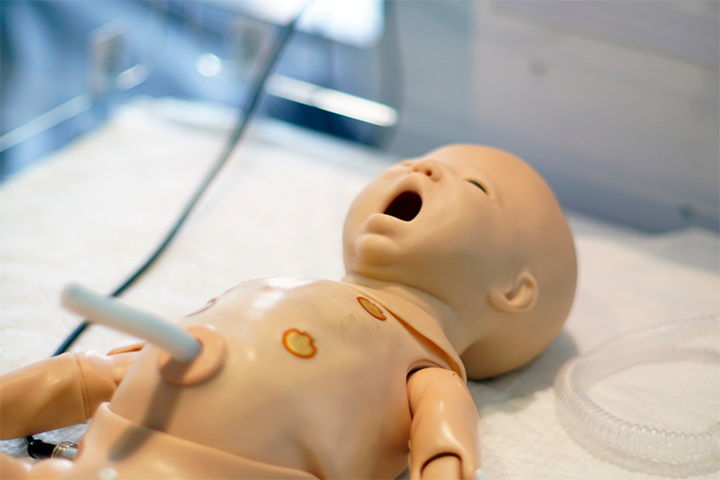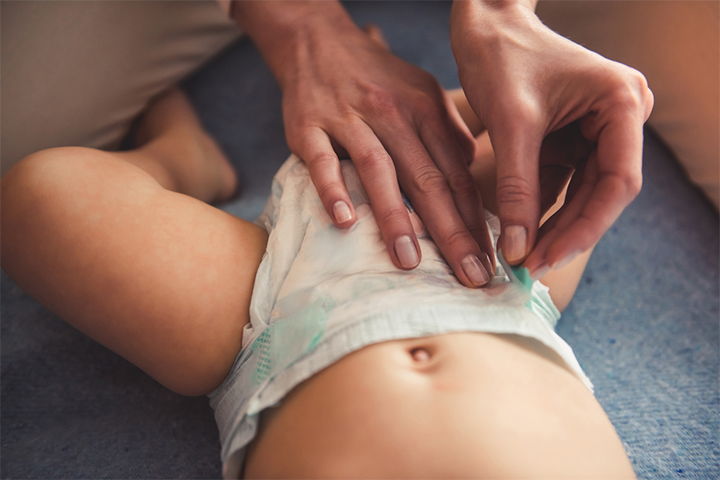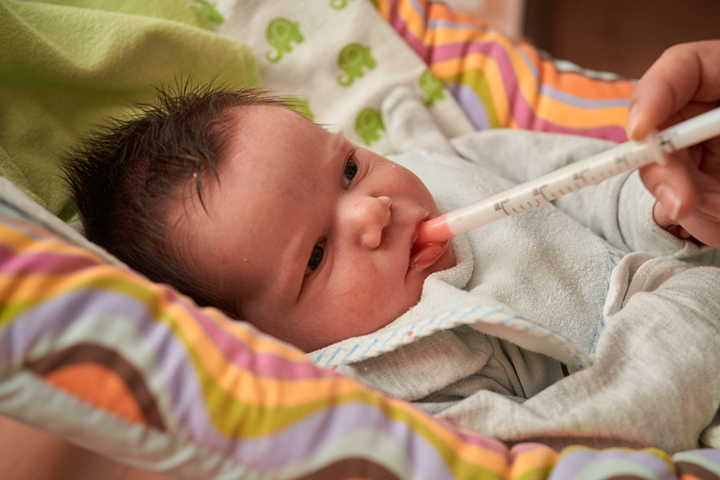Belly button bleeding in a newborn is usually not a cause for concern. The umbilical cord helps the placenta to attach to the fetus and supplies blood and nutrients. After delivery, it is clamped and cut, and the remaining part on your newborn’s abdomen is the umbilical stump.
The bleeding, also called umbilical bleeding, causes only a few drops of blood on the umbilical stump. The bleeding usually happens before or after the umbilical stump falls off. This post acquaints you with the cause of belly button bleeding, its treatment, and tips to help an umbilical stump heal faster.
Normal Umbilical Cord Bleeding
A small amount of umbilical cord bleeding is normal while it begins to separate from the baby’s body. You may notice a few drops of blood coming from the stump during or after it falls off. Bleeding may also occur if clothes or diapers rub against the stump (1).
A few drops of bleeding that subside quickly is normal and not a cause for worry. Sometimes, cleaning or applying pressure on the stump slows or stops the bleeding. Umbilical bleeding is considered abnormal if the blood appears even after wiping away or applying pressure.
Causes Of Baby Belly Button Bleeding
Newborn belly button bleeding can be due to various reasons. In most cases, it is not a cause for concern and part of the natural healing process. Below are the common reasons for belly button bleeding in newborns (2).
- Clothes or diaper rubbing against the umbilical stump
- The umbilical stump begins to separate from the body
- The umbilical stump has just fallen off
Although minor bleeding from the newborn’s belly button may resolve itself, persistent bleeding requires medical attention.
When Does The Umbilical Cord Fall Off?
The umbilical cord may fall off within one to two weeks in most newborns (3). This may occur early or later in some babies without any specific reasons. During the initial days of life, the umbilical cord stump begins to dry and become smaller in size, falling off eventually.
How To Care For The Umbilical Cord Stump?
The American Academy of Pediatrics (AAP) and the American College of Obstetricians and Gynecologists recommend dry cord care, which means natural drying of the umbilical stump. Alcohol cord care is usually advised in conditions that pose a high risk of infection and only if recommended by the doctor.
The following tips may help in umbilical stump care (4).
- Let the stump fall off its own: Pulling the stump is not recommended since this may increase bleeding or infection risk.
- Keep the stump dry and clean: Bathe the baby with a damp washcloth or sponge to keep the stump dry.
- Expose to air: You may keep the front of the diaper folded below the umbilical stump to expose it to the air. This may enhance the healing process.
- Changing diapers on time: This may prevent wetting or soiling the umbilical area. Practices such as swabbing the stump with rubbing alcohol during each diaper change are not recommended anymore since this may kill valuable bacteria.
- Choose loose-fitting clothes: Use loose baby clothes with delicate materials to avoid pressing and rubbing the stump.
Below are some don’ts to remember during umbilical cord care:
- Do not rub the cord with alcohol unless recommended by the doctor
- Don’t tug or pull the cord to remove it
- Avoid bathing the infant in the tub or sink until the umbilical cord falls off
The color of the umbilical stump may change from yellow to green and black while it is drying. There is no need to intervene since it is a natural change in color before the umbilical stump falls away.
When To Worry About Your Baby’s Umbilical Bleeding?
You may seek immediate medical care in the following situations (3).
- Umbilical stump continues to bleed even after applying direct pressure as instructed by the pediatrician
- Few drops of blood are seen for more than three days
- Newborn has a fever, indicating infection
- Redness, foul discharge, or swelling around the stump
- Baby cries when the area around the belly button is touched
- Rashes, blisters, or pimples around the belly button
- Cord does not fall within the stipulated time frame, persisting beyond three weeks
Treatment For Belly Button Bleeding
Doctors may recommend trying homecare over the telephone for uncomplicated umbilical bleeding in newborns. They may often instruct you to apply gentle pressure on the cord holding a sterile gauze pad. Applying pressure with bare hands may increase the risk of infections, making it essential to use a sterile gauze pad. Seek immediate medical care if the bleeding is not resolved after homecare interventions (2).
Babies with infections may receive antibiotics. Fresh frozen plasmaiXMade by separating plasma from blood and used to treat coagulation factor deficiencies., factor concentrateiXTreatment for hemophilia where missing clotting factor proteins are injected into the blood., and vitamin K may be prescribed if the bleeding is diagnosed to be a bleeding disorder.
Belly button bleeding in newborns is fairly common when the umbilical stump is about to fall off or has fallen off already. The bleeding usually stops on its own, and you can clean the area with a dry cloth. But if the bleeding persists and there are signs of an infection surrounding the stump area, consult with the pediatrician. It is advised that you let the stump fall off on its own and not manually intervene with it as it might increase the chances of infection. Dress your baby in light and breezy clothes and ensure that the stump is not getting brushed.
Key Pointers
- Belly button of a newborn could bleed due to the rubbing or falling of the umbilical stump.
- It is not a cause for concern and can be taken care of.
- In rare cases, you may consult your doctor if you notice your newborn getting affected adversely.
Learn how to care for your newborn’s umbilical cord stump and reduce the risk of infection. Understand adequate umbilical cord care and what to do if an infection occurs.













